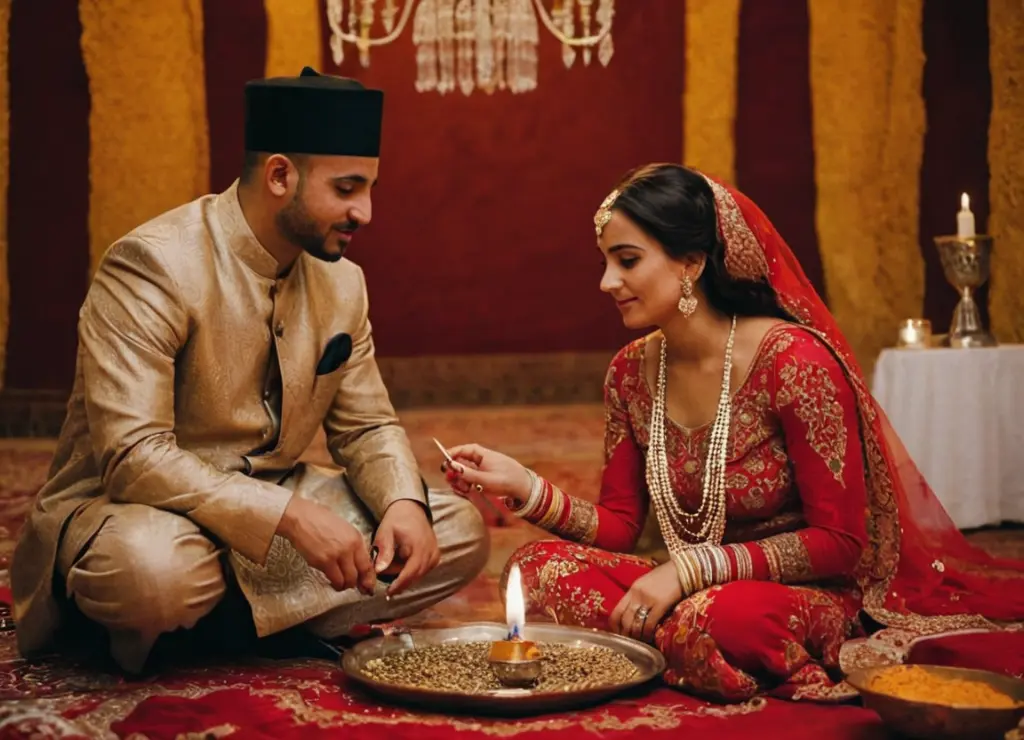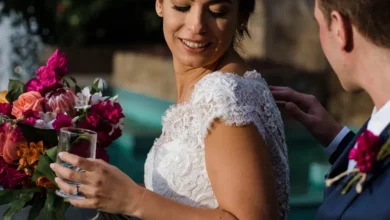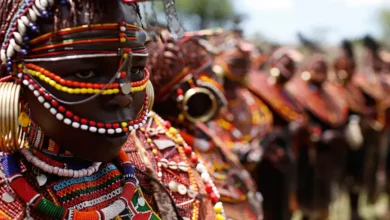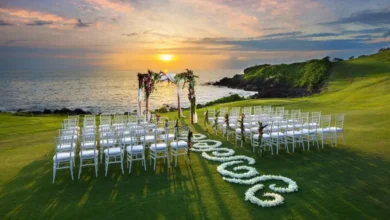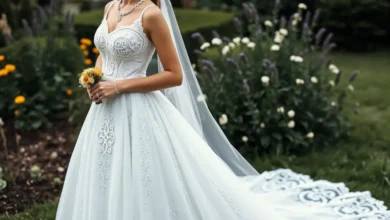Planning a wedding is a journey filled with choices, and one of the most exciting is selecting the perfect wedding dress. If you’re drawn to rich culture and vibrant traditions, exploring the realm of Moroccan wedding dresses might be the perfect choice for you. These dresses are not just garments; they are a celebration of history, artistry, and personal expression.
A Tapestry of Tradition: Understanding Moroccan Wedding Attire
Moroccan wedding attire is far from a monolithic style. It’s a diverse collection that reflects the country’s rich cultural tapestry, with influences from Berber, Arab, and European traditions. Unlike some Western weddings that focus on a single dress, Moroccan brides often wear multiple outfits throughout their wedding celebration. Each dress tells a story, showcasing different aspects of the bride’s heritage and personality.
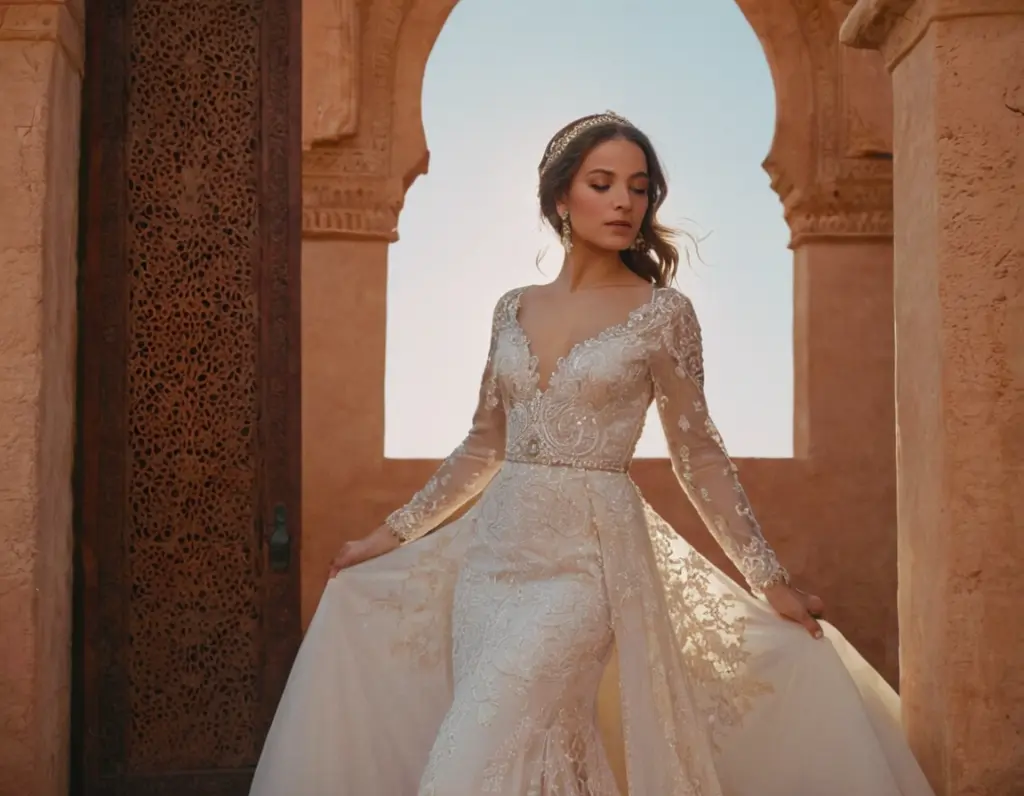
The Significance of Multiple Dresses
The tradition of changing into several different dresses is a key element of Moroccan weddings. This tradition serves multiple purposes. It allows the bride to showcase various aspects of her heritage, family background, and style preferences. It also creates visual interest and excitement for the guests throughout the celebration. This custom is a dynamic expression of the cultural richness of Moroccan weddings.
Key Features of Moroccan Wedding Dresses
While styles vary, certain elements are consistently found in Moroccan wedding dresses:
See also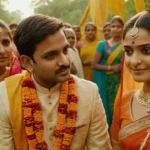 The Timeless Elegance of Indian Wedding Dresses
The Timeless Elegance of Indian Wedding Dresses
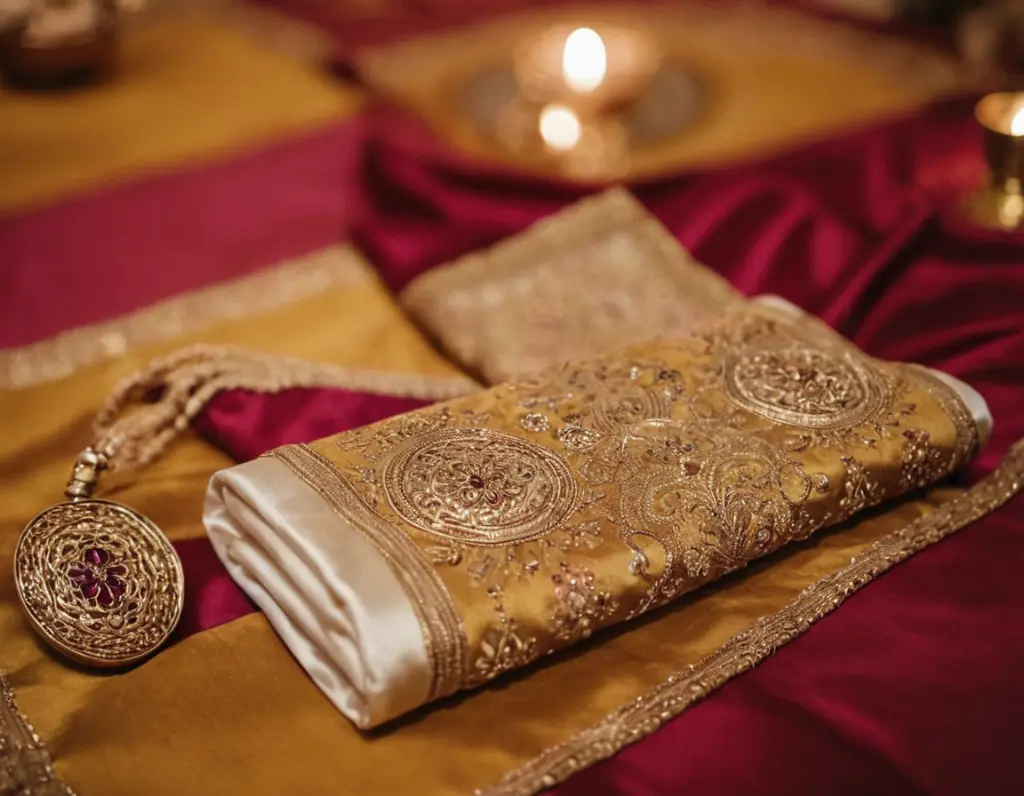
- Luxurious Fabrics: Think velvet, silk, and brocade, often heavily embellished with intricate embroidery and beading. These fabrics are chosen not just for their beauty, but also for their rich texture and luxurious feel.
- Intricate Embroidery: Traditional motifs and patterns, often handcrafted, using gold or silver thread. These embroideries are a testament to the artistry and skills passed down through generations.
- Rich Colors: From deep jewel tones like emerald green and sapphire blue, to warm reds and shimmering golds, each color carries its own symbolism and adds to the visual splendor of the attire.
- Modest Silhouettes: Often featuring long sleeves and high necklines, providing elegance and modesty. These silhouettes emphasize grace and sophistication, while also adhering to cultural norms.
- Statement Belts: Often crafted from metal and adorned with jewels, cinching the waist and adding a touch of regal grandeur. These belts are not only functional but are also a crucial element of the overall aesthetic, often highlighting the bride’s figure.
Exploring Different Styles: A Journey Through Moroccan Wedding Dress Varieties
The variety in Moroccan wedding dresses is vast, with different styles favored in different regions and families. Let’s delve into some of the most iconic ones.
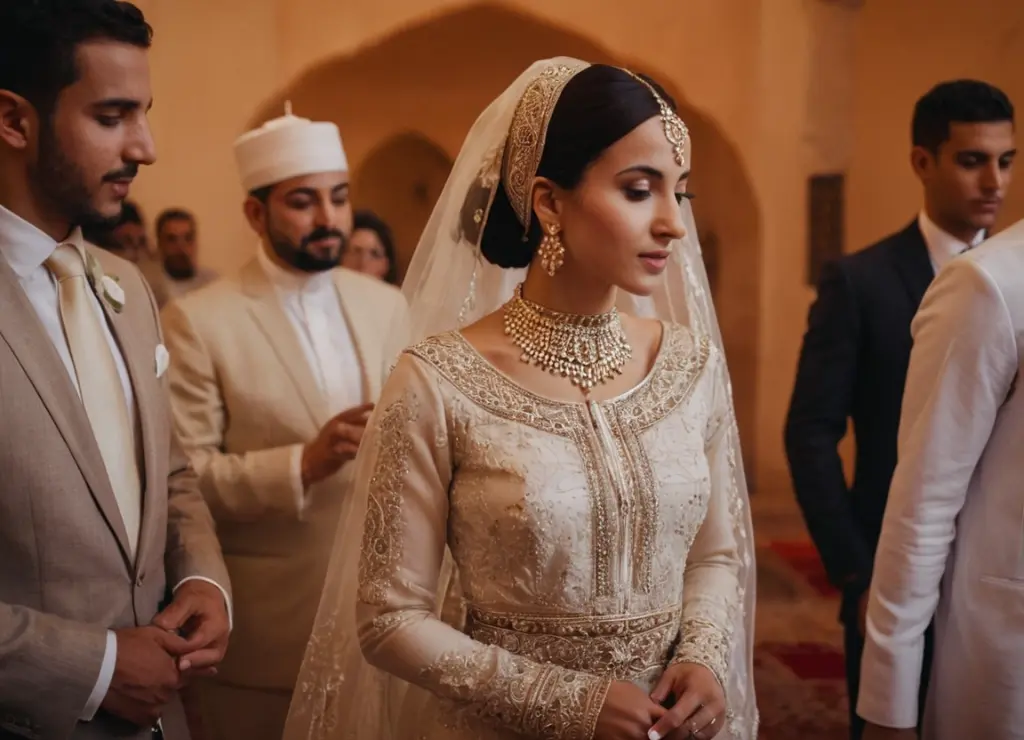
The Takchita: The Epitome of Elegance
The Takchita is perhaps the most well-known Moroccan dress. It is composed of two or three pieces: an underdress, often simpler, called a “tahtia,” and an overdress, the “fouqia,” which is usually heavily embellished. A decorative belt called “mdamma” is worn at the waist, cinching the outfit and emphasizing the figure. The Takchita is favored for its flowing silhouette and luxurious feel. It’s a versatile option suitable for different stages of the wedding celebration.
- Fabrics and Embellishments: Often made of silk, satin, or velvet, adorned with intricate embroidery, beadwork, and sequins.
- Design: Varies in sleeve length, neckline, and overall style, allowing for personalization to reflect the bride’s unique taste.
The Caftan: Timeless and Versatile
The Caftan is a traditional Moroccan robe, often worn for both special occasions and everyday use. Wedding caftans are more elaborate, made from exquisite materials with detailed embellishments. The Caftan can be simple and elegant or extravagant, depending on the design. It’s a versatile option that can be styled in various ways to suit the bride’s preference.
- Silhouette: Generally features a long, loose-fitting silhouette, ensuring comfort and ease of movement.
- Customization: Allows for various embellishments, including embroidery, beading, and other decorative elements.
The Lebsa Fasia: The Richness of Fes
Originating from the city of Fes, the Lebsa Fasia is a stunning example of traditional Moroccan craftsmanship. Characterized by its rich brocade fabric, elaborate embroidery, and striking silhouette, this dress is reserved for the most special occasions, including weddings. It is a symbol of elegance and cultural heritage.
See also Maasai Weddings Decoded: The Secret Language of Red and Beads
Maasai Weddings Decoded: The Secret Language of Red and Beads
- Key Features: Rich brocade fabrics, often in jewel tones, with gold or silver thread embroidery.
- Style: Can include multiple layers and intricate detailing, often with a long, flowing skirt.
Berber Dresses: Earthy and Vibrant
Berber wedding dresses reflect the culture of indigenous Moroccan communities. These outfits are often characterized by their use of bold colors, natural materials, and intricate woven patterns. The emphasis is on natural beauty and showcasing the region’s distinct artistic traditions. These dresses can range from minimalist designs to more ornamented versions.
- Materials: Natural fabrics like cotton or wool, dyed with natural pigments in vibrant colors.
- Patterns: Often incorporate tribal patterns, geometric shapes, and symbolic designs, adding a unique cultural touch.
Modern Interpretations: Blending Tradition with Contemporary Style
While traditional styles are still deeply cherished, many modern designers are incorporating contemporary elements into Moroccan wedding dresses. These modern interpretations blend the elegance of traditional designs with contemporary silhouettes and embellishments. This blending offers brides the option to honor their heritage while also embracing modern fashion trends.
- Fusion Designs: Combining elements from different styles for a unique, personalized look.
- Contemporary Fabrics: Experimenting with lighter, modern fabrics while still incorporating traditional embroideries and beading.
Choosing the Right Dress: Tips for the Modern Bride
Selecting the perfect Moroccan wedding dress is a deeply personal experience. Consider these tips when you begin your search:
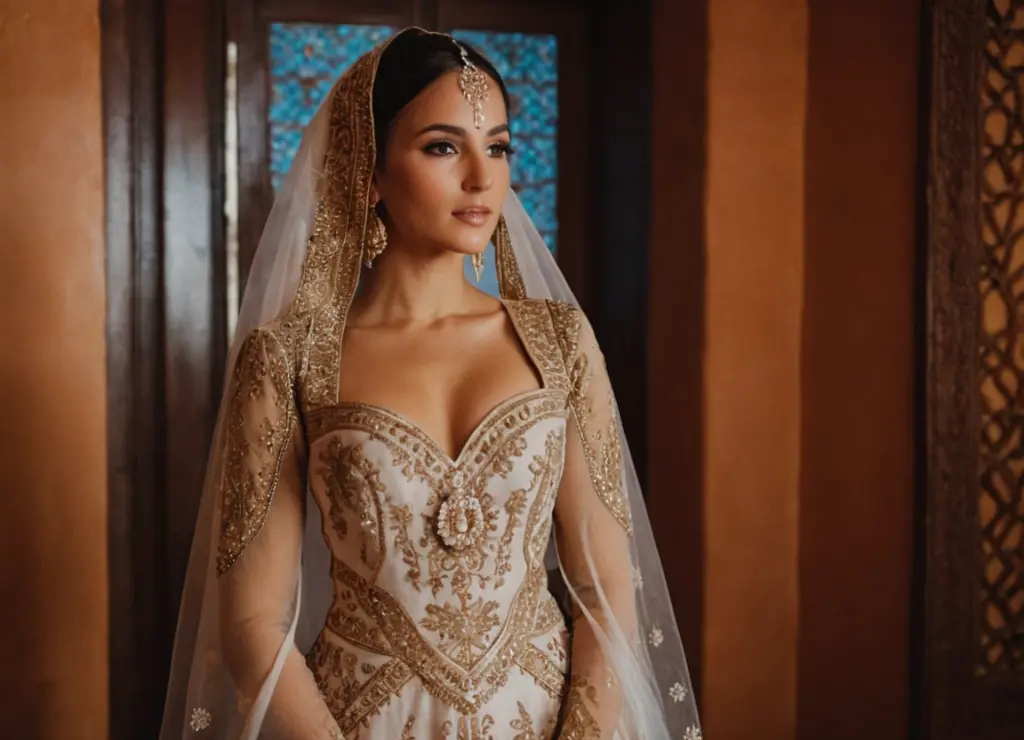
Reflecting Your Personal Style
While it’s important to honor tradition, remember that your wedding dress should reflect your individual style. Whether you prefer a classic look or a contemporary design, there is a Moroccan wedding dress that will resonate with your unique taste. Don’t be afraid to explore different styles and find one that truly feels like you.
Considering the Ceremony and Venue
The style of your wedding dress should complement your ceremony and venue. A grand, elaborate Takchita may be perfect for a formal wedding in a large ballroom, while a simpler Caftan or Berber dress could be more appropriate for an outdoor or intimate celebration. Consider the practicality of your chosen style in relation to the ceremony setting.
Understanding Fabric and Embellishment
Pay close attention to the fabric and embellishments of your dress. Each material and design element impacts the overall look and feel. Make sure the fabric is comfortable, breathable, and appropriate for the season and climate. Consider the symbolism behind different embroideries and choose those that resonate with you.
Seeking Expert Advice
Working with a skilled designer or tailor specializing in Moroccan wedding attire can be incredibly beneficial. They can offer valuable advice, guide you through the different styles and fabrics, and help you create a dress that perfectly fits your vision and body type. Their expertise will ensure that you receive a quality garment that meets your expectations.
Budgeting Wisely
Like all wedding dresses, Moroccan styles can vary significantly in price. Set a budget and be realistic about what you can afford. Remember that custom dresses are often more expensive than those bought off-the-rack. If you’re on a tight budget, consider looking for pre-owned options or explore simpler designs that still showcase the beauty of Moroccan craftsmanship. A little planning can help you find your dream dress without breaking the bank.
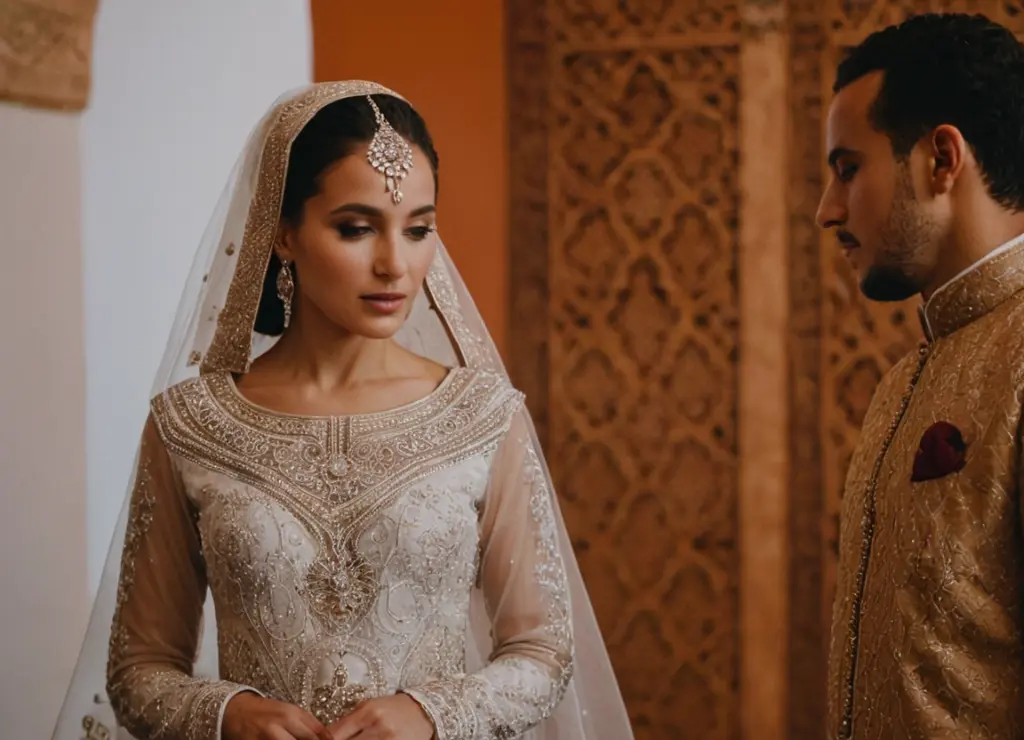
The Significance of Accessories
No Moroccan wedding dress is complete without the right accessories. These often include:
- Jewelry: Statement pieces such as ornate necklaces, earrings, and bracelets, often crafted from gold or silver.
- Belts: Elaborate metal belts, sometimes adorned with jewels, that cinch the waist and enhance the silhouette of the dress.
- Headpieces: Crowns or headscarves adorned with intricate embellishments.
- Shoes: Often elegant, handcrafted slippers, called “babouches“, sometimes embroidered or bejeweled.
These accessories not only complement the dress but also carry symbolic meaning and are integral to the overall wedding look.
Caring for Your Moroccan Wedding Dress
Due to the delicate fabrics and intricate embellishments, proper care is essential to preserve the beauty of your Moroccan wedding dress. Always follow the care instructions provided by the designer or tailor. Typically, professional dry cleaning is recommended. Store the dress in a cool, dry place, away from direct sunlight. Proper care ensures that your dress remains a cherished keepsake for years to come.
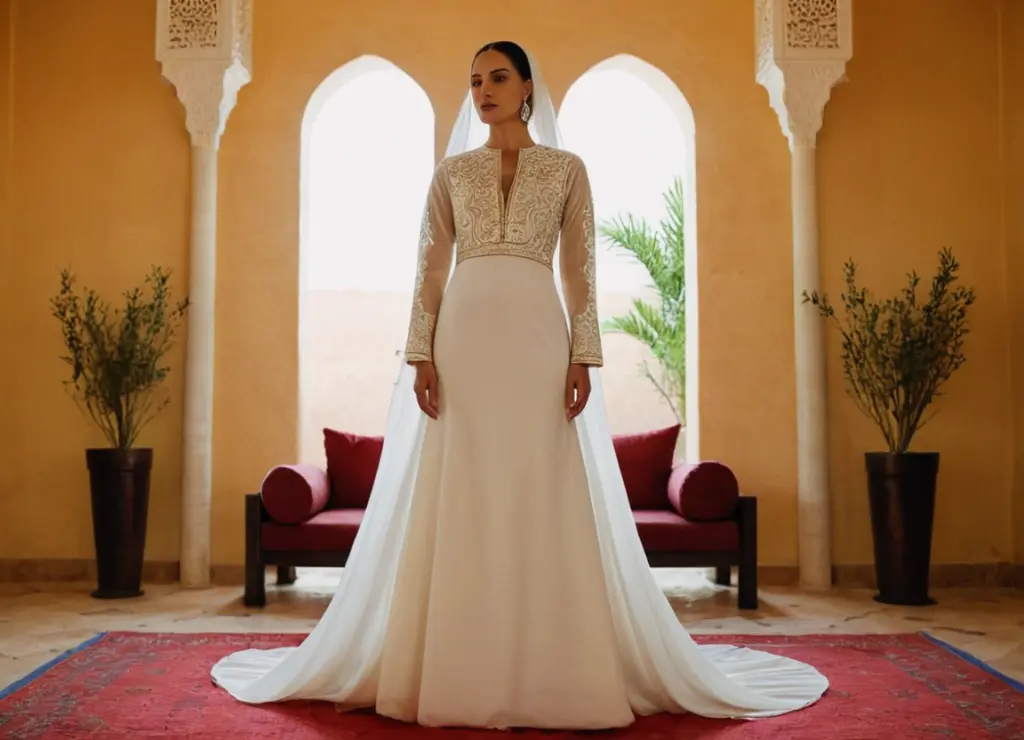
Conclusion: A Celebration of Heritage and Beauty
Moroccan wedding dresses are more than just beautiful garments; they are a celebration of history, artistry, and personal expression. Whether you choose a traditional Takchita, a flowing Caftan, or a modern interpretation, your dress will be a beautiful symbol of your cultural heritage and your love story. Each stitch, each embellishment, and each layer tells a story of tradition and elegance. As you wear your chosen dress, you are not only embracing your heritage but also creating a lasting memory of your special day.
